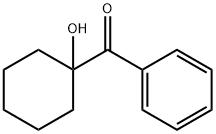Bis(2,2,6,6-tetramethyl-4-piperidyl) sebacate
- CAS NO.:52829-07-9
- Empirical Formula: C28H52N2O4
- Molecular Weight: 480.72
- MDL number: MFCD00134709
- EINECS: 258-207-9
- SAFETY DATA SHEET (SDS)
- Update Date: 2025-06-13 14:51:07

What is Bis(2,2,6,6-tetramethyl-4-piperidyl) sebacate?
Chemical properties
White solid
The Uses of Bis(2,2,6,6-tetramethyl-4-piperidyl) sebacate
T770 can be used as a hindered amine UV stabilizer in plastic materials. It can be used in the manufacturing and packaging of pharmaceutical products. Titanium oxide(TiO2)/T770 may be used in amine induced light stabilizers in the synthesis of recyclable water-based polyurethane with poly(oxytetramethylene)glycol (PTMG).
General Description
Bis(2,2,6,6-tetramethyl-4-piperidyl) (T770) sebacate is a low molecular weight ultra violet (UV) hindered amine light stabilizer (HALS) made up of nitroxyl radicals. It acts as a heat controller that can react with phenolic antioxidants incorporated in polymers.
Flammability and Explosibility
Not classified
Properties of Bis(2,2,6,6-tetramethyl-4-piperidyl) sebacate
| Melting point: | 82-85 °C(lit.) |
| Boiling point: | 499.8±45.0 °C(Predicted) |
| Density | 1.01±0.1 g/cm3(Predicted) |
| vapor pressure | 0Pa at 20℃ |
| Flash point: | 421 °F |
| solubility | acetone: 19 % (w/w) at 20 °C |
| form | powder to crystal |
| pka | 10.49±0.10(Predicted) |
| color | White to Almost white |
| Water Solubility | 18.8mg/L at 23℃ |
| InChI | InChI=1S/C28H52N2O4/c1-25(2)17-21(18-26(3,4)29-25)33-23(31)15-13-11-9-10-12-14-16-24(32)34-22-19-27(5,6)30-28(7,8)20-22/h21-22,29-30H,9-20H2,1-8H3 |
| CAS DataBase Reference | 52829-07-9(CAS DataBase Reference) |
| EPA Substance Registry System | Bis(2,2,6,6-tetramethyl-4-piperidyl) sebacate (52829-07-9) |
Safety information for Bis(2,2,6,6-tetramethyl-4-piperidyl) sebacate
| Signal word | Danger |
| Pictogram(s) |
 Corrosion Corrosives GHS05  Environment GHS09 |
| GHS Hazard Statements |
H318:Serious eye damage/eye irritation H410:Hazardous to the aquatic environment, long-term hazard |
| Precautionary Statement Codes |
P273:Avoid release to the environment. P280:Wear protective gloves/protective clothing/eye protection/face protection. P391:Collect spillage. Hazardous to the aquatic environment P305+P351+P338:IF IN EYES: Rinse cautiously with water for several minutes. Remove contact lenses, if present and easy to do. Continuerinsing. P501:Dispose of contents/container to..… |
Computed Descriptors for Bis(2,2,6,6-tetramethyl-4-piperidyl) sebacate
| InChIKey | XITRBUPOXXBIJN-UHFFFAOYSA-N |
| SMILES | C(OC1CC(C)(C)NC(C)(C)C1)(=O)CCCCCCCCC(OC1CC(C)(C)NC(C)(C)C1)=O |
New Products
4,4-Difluoropiperidine hydrochloride tert-butyl 9-methoxy-3-azaspiro[5.5]undecane-3-carboxylate Indole Methyl Resin N-Isopropylurea N,N-Dicyclohexylcarbodiimide(DCC) MELDRUMS ACID 5-METHYLISOXAZOLE-4-CARBOXYLIC ACID Magnessium Bis glycinate Zinc ascorbate 1-bromo-2-butyne 2-acetamidophenol 9(10H)-anthracenone Erythrosin B, 4-Piperidinopiperidine 2-((4-morpholinophenylamino) (methylthio) methylene) malononitrile 2,4-dihydroxybenzaldehyde 3-(4-morpholinophenylamino)-5-amino-1H-pyrazole-4-carbonitrile Methyl 2-methylquinoline-6-carboxylate 2,6-dichloro-4-nitropyridine 4-Bromo-2-chlorobenzonitrile 2-(benzylamino)acetic acid hydrochloride 4-(tert-Butoxycarbonylamino)but- 2-ynoic acid 3,4-dihydro-2H-benzo[b][1,4]dioxepine 1-Phenyl-1-cycloprppanecarboxylicacidRelated products of tetrahydrofuran








You may like
-
 52829-07-9 98%View Details
52829-07-9 98%View Details
52829-07-9 -
 Bis(2,2,6,6-tetramethyl-4-piperidyl) Sebacate CAS 52829-07-9View Details
Bis(2,2,6,6-tetramethyl-4-piperidyl) Sebacate CAS 52829-07-9View Details
52829-07-9 -
 Bis(2,2,6,6-tetramethyl-4-piperidyl) sebacate CAS 52829-07-9View Details
Bis(2,2,6,6-tetramethyl-4-piperidyl) sebacate CAS 52829-07-9View Details
52829-07-9 -
 Bis(2,2,6,6-tetramethyl-4-piperidyl) sebacate CAS 52829-07-9View Details
Bis(2,2,6,6-tetramethyl-4-piperidyl) sebacate CAS 52829-07-9View Details
52829-07-9 -
 Light Stabilizer 770 CAS 52829-07-9View Details
Light Stabilizer 770 CAS 52829-07-9View Details
52829-07-9 -
 Light Stabilizer 770 CAS 52829-07-9View Details
Light Stabilizer 770 CAS 52829-07-9View Details
52829-07-9 -
![Bis(2,2,6,6-Tetramethyl-4-Piperidyl)Sebacate [Sunovin 770]](https://img.chemicalbook.in//ProductImageIndia/2025-09-22/202509180019486602061482188.jpg) Bis(2,2,6,6-Tetramethyl-4-Piperidyl)Sebacate [Sunovin 770]View Details
Bis(2,2,6,6-Tetramethyl-4-Piperidyl)Sebacate [Sunovin 770]View Details
52829-07-9 -
 20677-73-0 (2,2-diethoxyethyl)methylamine 98%View Details
20677-73-0 (2,2-diethoxyethyl)methylamine 98%View Details
20677-73-0
Statement: All products displayed on this website are only used for non medical purposes such as industrial applications or scientific research, and cannot be used for clinical diagnosis or treatment of humans or animals. They are not medicinal or edible.
